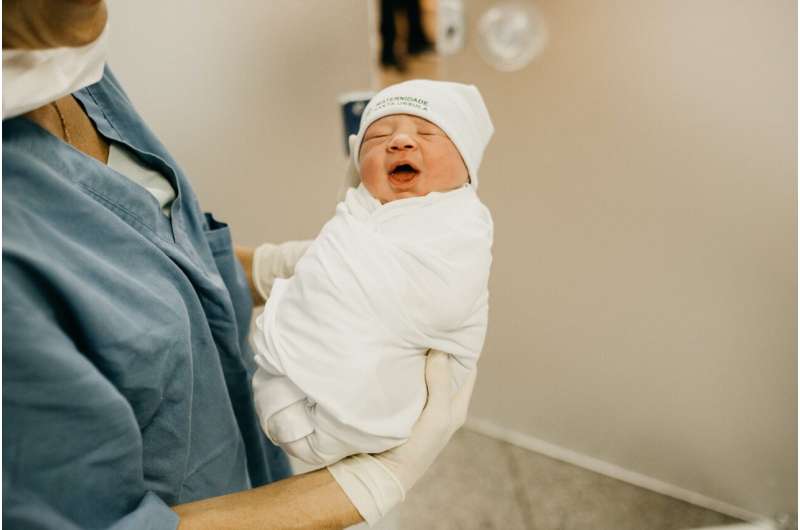This article has been reviewed according to Science X's editorial process and policies. Editors have highlighted the following attributes while ensuring the content's credibility:
fact-checked
peer-reviewed publication
trusted source
proofread
Cost of maternity care in Queensland is rising while adverse birth outcomes have become more frequent

The cost of maternity care in Queensland is rising while adverse birth outcomes have also become more frequent, new research has found, raising concerns about sustaining quality of care into the future.
The research, published in the Medical Journal of Australia and led by University of Technology Sydney (UTS) Professor Emily Callander, examined data on all births in Queensland between 1 July 2012 and 30 June 2018.
It found that the demographic characteristics of women giving birth is markedly changing and the cost of care is becoming unsustainable.
As health care spending changes in the wake of the coronavirus disease 2019 (COVID-19) pandemic, the authors argue that value-based care—care that is tailored to the need of patients and communities—is essential for maintaining quality and equity in maternity care.
"Value-based care … takes the experience of both the patient and the care provider into account, as well as the quality of care and its outcomes, efficiency, and sustainability," Callander and her co-authors wrote.
"As spending on health care changes, value-based care is even more critical for maintaining quality and equity."
Callander is a health economist and health services researcher specializing in maternal, women's and child health.
The changing maternity landscape
The mean cost per birth for maternity care in Queensland increased by $9,493 between 2012 and 2018, the study found, while the annual total cost for all pregnancies increased from $1.31 billion to $1.84 billion by the end of the study period.
Increasing age and greater frequency of obesity and weight-related conditions have contributed to a decline in the proportion of births without any adverse outcomes from 72.9% to 69.5%.
The proportion of women with diabetes giving birth increased from 6.4% to 13.1%.
The proportion of iatrogenic births (births that were induced or done by cesarean delivery) beyond 37 weeks' gestation increased from 40.0% to 49.6%, while the proportion of spontaneous vaginal births declined from 44.0% to 36.1%.
The growing rates of intervention during pregnancy aligns with projections that 45% of births in Australia and New Zealand will be by cesarean delivery by 2030.
The authors argue that with the increase in complicated birth cases, it is vital that quality care remains equitable and accessible.
"All women are entitled to high value maternity care, and optimal outcomes and value must be achieved in the face of increasing clinical complexity," Callander and her colleagues wrote.
The authors describe a challenging road ahead for reducing costs while improving maternity health care outcomes in Queensland.
"Coordinated efforts by clinicians, health services, and public health officials will be needed to improve value care, as is a national approach to reducing documented variations in costs between Australian hospitals," Callander and her colleagues wrote.
More information: Emily J Callander et al, The value of maternity care in Queensland, 2012–18, based on an analysis of administrative data: a retrospective observational study, Medical Journal of Australia (2023). DOI: 10.5694/mja2.52156





















